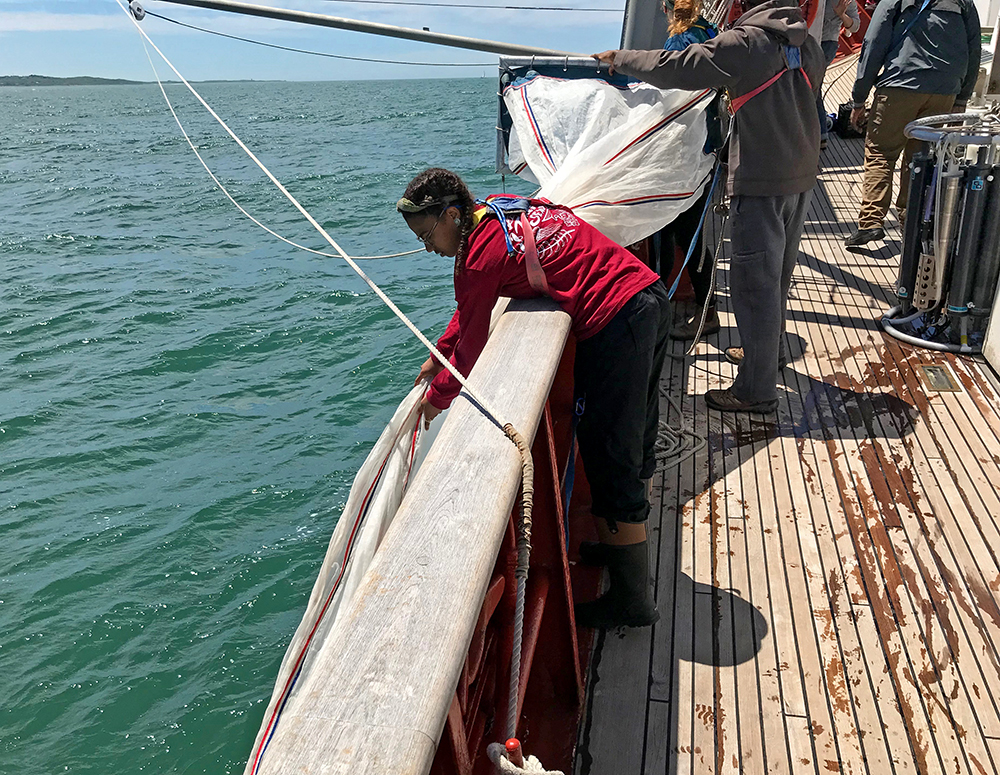Sampling neuston near NES-LTER Station L1
We kicked off summer 2019 with a unique opportunity to sample zooplankton at the surface near NES-LTER Station L1. Jaxine Wolfe, one of our summer REUs (Research Experiences for Undergraduates), joined other students as part of the Woods Hole Partnership Education Program (PEP) on a cruise on the Sea Education Association‘s research sailing vessel Corwith Cramer. From Jaxine: “Living on the Cramer for 5 days was a wonderful experience because we were part of the crew. So along with the opportunity to deploy scientific instruments and collect data at sea, we also got to learn how to sail the ship itself. When I wasn’t casting a CTD over the side or classifying zooplankton under a microscope from the neuston net tow, I was trimming sails, standing lookout on the bow, or steering at the helm.”
Jaxine deployed a neuston net at Station L1 and other stations off the coast of Massachusetts and Rhode Island (see photo). We look forward to comparing the composition of these surface zooplankton to zooplankton sampled in our depth-integrated casts, and also to gut contents of small pelagic forage fish. Jaxine’s project this summer is titled “Are there long-term changes in diets of pelagic fishes in the Northeast U.S. Shelf Large Marine Ecosystem?”. Jaxine recently graduated from Northeastern University and is pursuing research in marine ecology as well as experience in data science and data management.



